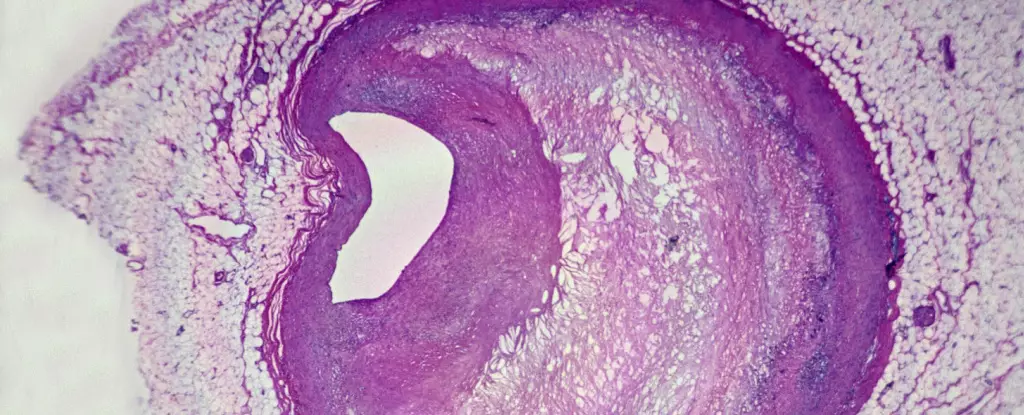In recent years, the pervasive presence of microplastics has emerged as an alarming public health concern. These minuscule particles, remnants of larger plastic items broken down over time, are now infiltrating virtually every corner of the globe, from our deepest oceans to the food we consume, and startlingly, our bodies. Detectable microplastics have even been found in human organs, including the lungs and, crucially, the vascular system. As researchers delve into this phenomenon, it becomes imperative to comprehend the implications of microplastics on our health, particularly concerning cardiovascular diseases, such as heart attacks and strokes.
Recent studies, including work conducted by Dr. Ross Clark from the University of New Mexico, have illuminated a disconcerting correlation between microplastic presence in arterial plaque and an increased risk of severe cardiovascular events. This relationship has garnered significant attention within the scientific community, not merely for its shock value but for the potential underlying biological mechanisms that could redefine our understanding of heart disease.
Unveiling the Study’s Revelations
The groundbreaking research led by Dr. Clark aimed to measure the concentration of microplastics within fatty plaques, which are notorious for obstructing blood flow in arteries. Announcing their findings recently at the American Heart Association meeting, Dr. Clark and his team revealed some compelling yet disturbing data. In their samples, the microplastic content in the diseased arterial plaque was astonishingly higher than in healthy arteries. Specifically, plaque from asymptomatic individuals had 16 times the amount of microplastics present, while individuals who had experienced strokes showed a staggering increase of 51 times more microplastics within their arterial plaque.
These findings beckon immediate scrutiny. It raises an array of critical questions about the role these materials play, particularly in the context of inflammation—one of the key contributors to cardiovascular disease. As Jaime Ross, a neuroscientist commenting on the research, pointed out, a mere three-fold increase in any biological signal is often indicative of a significant finding. Therefore, a 51-fold increase is not just shocking; it poses serious implications for our understanding of vascular health.
Biological Implications: Can Microplastics Disrupt Gene Activity?
The implications of these findings extend beyond mere correlation. Dr. Clark’s research explored potential changes in gene expression among immune cells within the plaque. Astonishingly, they observed that white blood cells in areas with elevated microplastic concentrations exhibited altered gene activity—specifically, a downregulation of genes that typically serve to mitigate inflammation. This suggests that microplastics could be playing a direct role in exacerbating the very conditions that lead to heart disease.
Moreover, the research hints at genetic alterations in stem cells integral to cardiovascular health. These stem cells are believed to hold the capacity to combat the adverse effects of inflammation and stabilize plaque deposits. The potential influence of microplastics on these vital biological processes underscores a previously uncharted territory in cardiovascular research—one that necessitates further investigation.
Challenges in Microplastic Measurement
Despite the compelling nature of the discoveries, researchers face significant methodological obstacles in quantifying microplastics within biological samples. Dr. Clark and his team employed rigorous conditions to isolate and measure microplastics, including heating plaque samples to over 1,000 degrees Fahrenheit, which poses risks of misidentifying lipids as plastics due to their chemical similarities. While the team is progressing towards refining their techniques, numerous limitations surrounding methodologies impede precise measurement and require acknowledgment.
The challenge of accurately tracking microplastics in human tissue reinforces the urgent need for enhanced scientific methodologies. The complexities involved indicate that scientists are merely scratching the surface of understanding how these materials interact with our biology. In a landscape where plastic pollution continues to escalate, the health implications of these substances necessitate innovative approaches to research and measurement.
The Path Ahead: Addressing the Microplastic Crisis
The research spearheaded by Dr. Clark signifies a pivotal movement towards unraveling the enigma of microplastics within human health. Yet, as the shadows of cardiovascular risks loom, it is evident that more extensive studies are imperative. With an increasing number of microplastics infiltrating our ecosystem, the converging paths of environmental science and public health must harness collaborative efforts to deepen our understanding.
Dr. Clark’s ambition to investigate the interactions of microplastics with immune cells heralds the promise of future discoveries. The potential for animal studies to yield causative insights further highlights the essential nature of this research. Without a doubt, as society grapples with the complexity of plastic pollution, questions surrounding its health implications must find their answer. In doing so, we may better equip ourselves to thwart the silent threat microplastics pose to our cardiovascular health and overall well-being.

